You searched for: www.highwincasino.com/recommandation-and-reviews-of-fc-slot-free-play-and-demo/
<< Previous | Displaying results 251-275 of 480 for "www.highwincasino.com/recommandation-and-reviews-of-fc-slot-free-play-and-demo/" | Next >>
-
Sophie Turner-Zaretsky describes how her teddy bear came into her possession
Oral HistorySophie was born Selma Schwarzwald to parents Daniel and Laura in the industrial city of Lvov, two years before Germany invaded Poland. Daniel was a successful businessman who exported timber and Laura had studied economics. The Germans occupied Lvov in 1941. After her father's disappearance on her fifth birthday in 1941, Sophie and her mother procured false names and papers and moved to a small town called Busko-Zdroj. They became practicing Catholics to hide their identities. Sophie gradually forgot that…
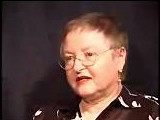
-
The Order Police
ArticleThe Order Police (Ordnungspolizei, Orpo) were Nazi Germany’s uniformed police forces. They became perpetrators of horrific crimes and played a significant role in the Holocaust.
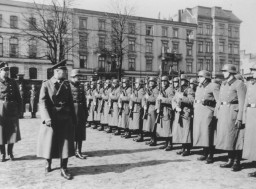
-
Kurt Gerstein
ArticleSS officer Kurt Gerstein was horrified by what he witnessed at the Belzec killing center. Learn about how he recorded what he witnessed and about his postwar fate.
-
Hitler Youth
ArticleThe Hitler Youth and the League of German Girls were developed as Nazi Party youth groups to indoctrinate children and youth in Nazi ideology and policy.

-
How did German professionals and civil leaders contribute to the persecution of Jews and other groups?
Discussion QuestionHow involved in the Holocaust were German professionals and civil leaders? What were some of the motivations and pressures that led to a wide range of behavior? What indeed was the range of behavior, from complying to perpetrating? Explore...
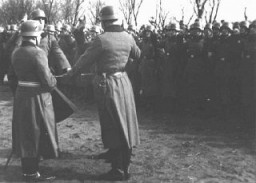
-
President Truman attends Potsdam Conference
FilmAfter the sudden death of Franklin D. Roosevelt in April 1945, Vice President Harry S. Truman became president of the United States. Here, President Truman meets with the heads of state of the Soviet Union and Great Britain (Joseph Stalin, Winston S. Churchill, and later Clement Attlee) in Potsdam, near Berlin, to discuss the future of defeated Germany. The leaders agreed to the partition of Germany and Berlin, Germany's capital city, into four zones of occupation: British, French, American, and Soviet.…
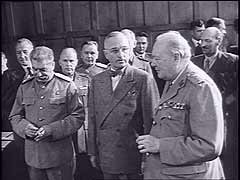
-
Berga-Elster ("Schwalbe V")
ArticleAt the Berga-Elster subcamp of Buchenwald, prisoners were forced to do dangerous and brutal work in tunnels to support fuel production for the German war effort.

-
The Rescue Mission of Gilbert and Eleanor Kraus
ArticleIn the spring of 1939, Gilbert and Eleanor Kraus rescued 50 Jewish children from Vienna, Austria, by bringing them to the United States. Learn about their mission.
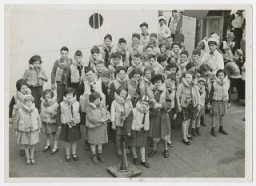
-
The Nazi Kripo (Criminal Police)
ArticleThe Nazi Kripo, or Criminal Police, was the detective force of Nazi Germany. During the Nazi regime and WWII, it became a key enforcer of policies based in Nazi ideology.

-
Hajj Amin al-Husayni: Arab Nationalist and Muslim Leader
ArticleHajj Amin al-Husayni claimed to speak for the Arab nation and the Muslim world and sought an alliance with the Axis powers during WWII. Learn more about his actions

-
Betje Jakobs
ID CardBetje and her sister Saartje were born to Jewish parents in the town of Zwolle in the Netherlands' north central province of Overijssel. Betje was known affectionately as "Bep" to her friends. The Jakobs family owned a successful sporting goods store. 1933-39: As a young girl, Betje enjoyed playing the piano, knitting and tennis. At age 16, while still in secondary school, she began to date Maurits Wijnberg, a boy two years her senior, whose family owned Zwolle's Hotel Wijnberg. 1940-42: The Germans…
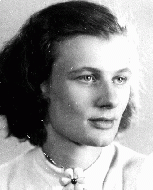
-
Valtr Krakauer
ID CardValtr was the fourth of six children born to Jewish parents in a small Moravian town, where his father ran a dry-goods and clothing store. The Krakauers spoke both Czech and German at home. Valtr attended German-language schools and also played soccer for the Maccabi Jewish team. After graduating from secondary school, Valtr enrolled in a fashion-design school in the city of Brno. 1933-39: In Brno, Valtr founded a factory that produced ready-made clothes. He closely followed the rise of Nazism in Germany…
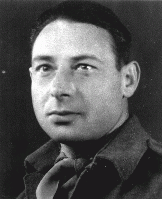
-
Rudolf Acohen
ID CardRudolf, known as Rudi, and his brother were born in Amsterdam to a Jewish family of Spanish descent. The family lived in a pleasant neighborhood in the southern part of the city. Rudi attended Montessori grade school and high school. 1933-39: For summer vacation in 1935 Rudi's parents rented a house near the beach in Zandvoort, near Amsterdam. There he met a girl, Ina, and they became good friends. In the summer they discovered that they would be attending the same Montessori high school. Rudi and Ina and…
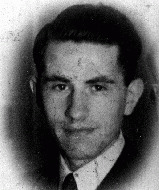
-
League of German Girls jacket
ArtifactThis League of German Girls jacket has two embroidered cloth patches handstitched to the upper left sleeve: a dark triangle displaying the name of the member’s region, South Franconia (Süd Franken), and a Hitler Youth insignia. Beginning in 1933, the Hitler Youth and its organization for girls and young women, the League of German Girls, played an important role in the new Nazi regime. Through these organizations, the Nazi regime indoctrinated young people with Nazi ideology, including antisemitism and…
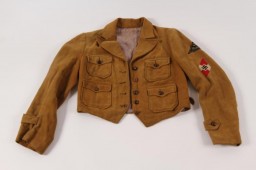
-
Hitler Youth proficiency badge
ArtifactThis Hitler Youth proficiency badge would have been awarded for the successful completion of a series of tests measuring physical and ideological proficiency. Success in these tests was rated according to criteria in the Hitler Youth identity document and performance book known as the Leistungsbuch. On this badge, the arrow shape (the tyr-rune) represents the warrior god Tyr. Beginning in 1933, the Hitler Youth and the League of German Girls had an important role to play in the new Nazi regime. Through…
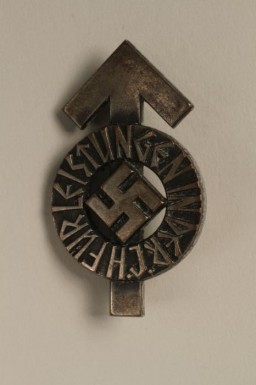
-
Gideon Boissevain
ID CardGideon was known affectionately as "Gi" by his family and friends. His parents were descended from the Huguenots, French Protestants who came to the Netherlands in the 16th and 17th centuries. Gi had two brothers and two sisters, and his father worked in the insurance business. 1933-39: Gi had a large circle of friends, both Christians and Jews, and after school they all liked to get together. He and his friends enjoyed taking bike trips, having parties, and playing records. In the mid-1930s his parents…
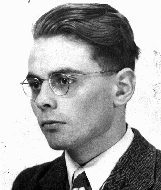
-
Alfred (Fredl) Krakauer
ID CardAlfred was the fifth of six children born to Jewish parents in a small town in Moravia, where his father ran a dry-goods and clothing store. The Krakauers spoke both Czech and German at home. In 1929 and 1930, after graduating from secondary school, Alfred served in the Czechoslovakian army. He enjoyed skiing and also played soccer for the Maccabi Jewish team. 1933-39: Alfred graduated in 1934 from Prague's Industrial School for Art. He became a graphic artist and decided to remain in Prague because of…
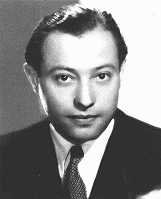
-
Miles Lerman describes roles of women in the underground
Oral HistoryMiles Lerman was a Holocaust survivor, partisan fighter in the forests of Poland, international leader in the cause of Holocaust remembrance, and a "founding father" of the United States Holocaust Memorial Museum.

-
Theresienstadt: Establishment
ArticleLearn about the establishment of the Theresienstadt camp/ghetto, which served multiple purposes from 1941-45 and had an important propaganda function for the Germans.

-
Nazi Propaganda
ArticleNazi propaganda had a key role in the persecution of Jews. Learn more about how Hitler and the Nazi Party used propaganda to facilitate war and genocide.

-
German Foreign Policy, 1933–1945
ArticleAdolf Hitler came to power with the goal of establishing a new racial order in Europe dominated by the German “master race.” This goal drove Nazi foreign policy. Learn more

-
Rallying the Nation
ArticleThe Nazis used propaganda to promote their ideas and beliefs about a "national community." Read more about the principles, goals, and strategies of Nazi propaganda.
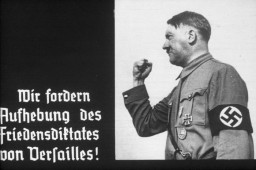
-
Indoctrinating Youth
ArticleThe Nazi Party targeted German youth as a special audience for its propaganda messages. Read more about the indoctrination of youth.
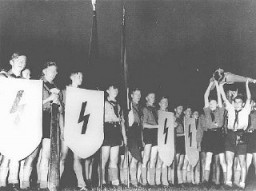
-
Hermann Ludwig Maas
ArticleHermann Ludwig Maas, a Protestant pastor in Heidelberg, Germany, was a rescuer and clergyman who stood in solidarity with the Jewish community.
-
Nazi Terror Begins
ArticleAfter rising to power in January 1933, the Nazis began the process of moving Germany from a democracy to a dictatorship. Learn more.

